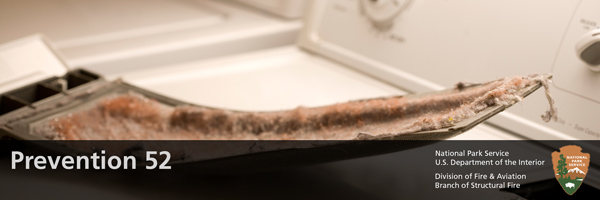Lint is very flammable, so cleaning the lint filter is critical.

Clothes dryers are a major source of structural fires.
According to the U.S. Consumer Product Safety Commission, 15,500 fires are caused by clothes dryers annually in the United States. This results in an average of 10 deaths, 310 injuries, and over $84 million in property damage. What is the common denominator and the major contributing factor to these fires? Lint.
Where does lint come from? Most lint is born in the clothes dryer. If you helped with the laundry when you were a kid you probably observed this. Clothes dryers are wonderful inventions, but they create dryer lint, the fuzz and bits of cloth flung off during the tumbling and drying process. The lint is trapped in the lint filter. Lint is very flammable, so cleaning the lint filter is critical.
What can you do with lint? Use it as a firestarter. As we mentioned, lint is highly flammable. You can save your dryer lint in toilet paper rolls, store them somewhere dry, and use them as handy fire starters for the fireplace in the fall or the campfire this summer.
Thrifty Fun recommends using dryer lint to stuff small hand-sewn dolls or bears. Not only will they smell great, they'll be washable too. Lint bears aren't meant for children though, because dryer fuzz is highly flammable.
Lint makes a great addition to your compost heap or worm farm. Apparently stray sweater fibers make a good snack for the bacteria usually found in these types of soil.
An artist in Chapel Hill, N.C., uses leftover lint to make paper and then creates small books and framed artwork out of it. Another artist took the idea a step further and formed the National Lint Project.
The Dollar Stretcher suggests using lint to cushion small items for shipping. There is also a recipe on the site for making nonedible lint-based clay that can also be used in place of paper-mâché.
Creative Frugal Living advises its readers to stuff excess lint into old tube socks and use them as draft stoppers.
Can lint be used as bird nesting material? No way! This is a dated misconception. Some dryer lint from synthetic fibers becomes crumbly after it's rained on and dries and some laundry detergents and fabric softeners may leave harmful residues. Therefore, it is not recommended to offer dryer lint to birds for nesting.
Fire Info for You
Everyone
- Take a minute and check out the NFPA Safety Tip Sheet before you go check your dryer’s lint screen.
- Watch this video newscast on dryer fires.
Park Structural Fire Coordinators
Ensure that facility and housing managers are aware of the potential dangers associated with dryers and that all laundry facilities are properly maintained. If your park has concession housing, share this information with their housing manager also! Vent systems in particular need to be cleaned at least annually, and should be inspected regularly. Fire protection systems should be installed and maintained annually.
Take Action
- Always clean the lint screen before or after each load of clothes. Not only will it help prevent a fire, it will help your clothes dryer run more efficiently.
- Clean the dryer vent and exhaust duct at least every year.
- Do not leave a dryer running if you are not home.
- Do not dry any items made of foam, rubber or plastic, all of which can cause a fire.
- Do not overload a dryer with wet clothes.
- Keep the area around the dryer clean and free from clutter.
- Install rigid or flexible metal venting.
- Always use the appropriate electrical outlet for dryers.
- Do not place clothes or fabric soiled with a flammable substance, such as gasoline, cooking oils, grease, or oil, in a dryer.
- If you notice a dryer malfunctioning, notify the proper maintenance personnel, or for a residential dryer, call a service technician immediately. The signs of a malfunctioning dryer include needing a higher heat setting to dry the same old load of clothes, needing multiple cycles or more quarters, your housemates getting mad at you because your laundry takes so long, and the worst-case scenario, of course, is smoke or flames. If you see smoke or flames, get out of the house and call 911.
NPS Fire Facts
A park employee used a dryer to dry rags that had been soiled with grease. The dryer heated the grease to the point of ignition, causing a large amount of smoke to come out of the dryer and activate the smoke alarm. Fortunately, a lodge employee found the source of the smoke, unplugged the dryer, and suppressed the small fire. The alarm system operated properly and the building was evacuated.
The quick actions of the lodge employee prevented a potentially large fire loss. It was also fortunate that the fire alarm and suppression system had been maintained and functioned properly.
Unfortunately, the park's engine company was not notified, and no trained fire personnel responded. Had this fire grown too large for the employee to suppress, the delay in fire department response could have resulted in a considerably greater loss.
